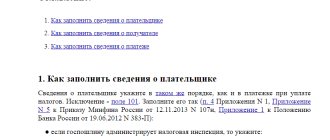The owner of the land does not always know everything about his property, as Chekhov described in detail in his disputes about the Oxen Meadows.
For a long time, all land in the Soviet Union belonged only to the state, so the history of private land ownership began only in 1991. It was then that in our country people got the opportunity to own their own land.
Unfortunately, over 27 years of a market economy, it turned out that many owners are still not ready to responsibly manage their property. In confirmation of this, there is still a huge amount of unregistered, undemarcated land in Russia. Which undoubtedly leads to disputes and misunderstandings.
What is land seizure
All land plots have their own owner. They can be individuals, organizations, municipalities or the state. There is not a single meter of land that does not belong to anyone. Ownership rights are protected by law. Any encroachment on someone else's property is punishable by law. Therefore, no one will be able to use lands that do not belong to him in his own interests with impunity.
Very often there are facts of illegal construction of buildings on territory that does not belong to these persons. In such circumstances, we are talking about unauthorized buildings.
It is important to know that it is almost impossible to legalize a residential building built on someone else’s land. By law it is subject to demolition. The costs incurred by the owner of the illegal building will not be reimbursed by anyone. Moreover, he will have to demolish the constructed facility at his own expense and pay fines for violating land use rules.
Along with this, in practice there are other cases of violations of land legislation:
- use of land adjacent to the owner's site. For example, the owner of the house grows vegetables on it, equips it to accommodate a car, or stores building materials or other property on it;
- violation of the norms of indentation from objects;
- failure to respect the boundaries of adjacent areas. The above violations are not always committed intentionally. Sometimes an unwitting lawbreaker may be mistaken about the boundaries of his property, for example, if he loses documents for it.
A plea of ignorance of the law does not exempt the violator from liability for the illegal use of land that does not belong to him.
Responsibility for squatting
State bodies monitor compliance with land legislation and the correct determination of the boundaries of plots used by owners and tenants. If an illegal seizure of land is detected, an act is drawn up, on the basis of which the violator can be held accountable.
Land squatting is considered an administrative offense (Article 7.1 of the Code of Administrative Offenses of the Russian Federation), for which a fine may be charged, calculated as a percentage of the cadastral value of the occupied territory. Both citizens and legal entities are recognized as violators.
Rights of the owner of the land plot
How does the law regulate issues related to illegal seizure of land?
If you find yourself in a situation where your land ownership has been violated, consider the following legal provisions for guidance:
- the owner has the right to reclaim his property from someone else’s illegal possession (Article 301 of the Civil Code of the Russian Federation);
- the legal owner of the land can demand the removal of all obstacles that prevent him from possessing and enjoying his property. So, if one of the neighbors set up a warehouse for construction materials on its territory or blocked the entrance to the site (Article 304 of the Civil Code of the Russian Federation);
- The law has not established any time limits for the protection of property rights. The statute of limitations does not apply to such disputes. Therefore, the owner can file a claim in court at any time (Article 208 of the Civil Code of the Russian Federation).
The grounds for starting a legal battle between neighbors can be not only cases of unauthorized seizure of land, but also the neighbor’s failure to comply with approved SNiP 30-102-99. For example, if a bathhouse is built on a neighboring plot in close proximity to the border and the distance to it is less than a meter, this may serve as a reason to initiate a civil case in court.
Do not forget that the easiest and fastest way to resolve a dispute over a land issue is to reach a compromise between the owners of neighboring plots. Try to first discuss the conflict situation with your neighbors; it is possible that they do not even suspect that they are breaking the law.
Comparison of concepts
Different laws use different concepts to designate the objects in question:
- Article 262 of the Civil Code and Article 85 of the Land Code operate with the concept of “public land plot”;
- The town planning code uses the term “public areas”.
REFERENCE: Although the Civil Code and the Land Code use the same wording, the meaning given to it is different. The Land Code lists the objects of the road network, as well as beaches and water bodies. The Civil Code speaks of any unfenced areas classified as public property, and these also include forests, swamps, and meadows where picking berries and mushrooms is allowed.
More information about the right to use forest and water resources lands owned by the state can be found in a separate article.
The Town Planning Code provides a definition of public areas, and for clarification, a non-exhaustive list is included, which echoes the list from Part 12 of Art. 85 ZK.
Summarizing the overview of concepts, it should be noted that it is more correct to talk not about lands, but about public land plots.
They can be included, as stated in Art. 85 ZK, to any territorial zones, that is, to public and business, residential, industrial, and so on.
This is natural, because all these areas must have streets.
However, when turning to the Civil Code, another contradiction in concepts emerges: territorial zones are the zones for which urban planning regulations are established, and Part 4 of Art. 36 of the Civil Code establishes that town planning regulations do not apply to plots within public areas. That is, according to the Civil Code, public lands are not included in any territorial zones.
On our website you will find a lot of materials talking about the right to use land plots, and not only those that are public lands. From them you will learn:
- In what case is a government act required?
- To whom is the right to free use of memory given and what does it mean and what is the peculiarity of such urgent use?
- What does the right to permanent, unlimited use of a site mean and what to do if it is terminated?
- What does permitted use of memory mean and what is meant by using memory for purposes other than its intended purpose?
- What are the features of using agricultural land?
Where to turn if a neighbor has seized a plot of land
In order to prevent violations of the law, there are bodies that monitor the correct use of land, whose functions include:
- ensuring the use of land plots strictly in accordance with their intended purpose, for example, preventing the construction of residential buildings on agricultural lands, engaging in business activities on lands allocated for housing construction;
- checking whether there were in fact facts of unauthorized land seizures and violations of their borders.
If you establish any violation of the law in relation to the land plot you own, file a complaint with the municipality or the above-mentioned body. If they do not take any effective measures or delay consideration of your issue, then it is worth drawing the attention of higher authorities to this problem.
Who can issue a fine for illegal use of land?
According to the Code of Administrative Offences, administrative offenses are considered by local authorities. Their powers extend to issuing fines and monitoring their payment. According to Article 23.21 of the Code of Administrative Offenses of the Russian Federation, the following may be involved in identifying the squatting of land plots:
- RF Inspector for Land Use and Protection, including his deputies;
- supervisory authorities;
- local authorities represented by inspectors and their deputies;
- city prosecutor, if the case is complex and the violator’s activities pose a threat to the life and health of people;
- in exceptional cases, police officers.
The inspector draws up an act on the illegal operation of the site on the spot and issues a fine to the violator.
The procedure for seizing land if the boundaries of the site are established
Before going to court, carefully study all documents related to your land plot. Check the data on the site's boundary plan with its cadastral passport or an extract from the Unified State Register of Real Estate. The register contains all the data on the boundaries of land plots in respect of which land surveying was previously carried out.
Using these documents, it is possible to accurately determine whether a seizure of foreign territory took place. They will also serve as evidence that you are right in negotiations with the owners of neighboring plots or persons who have committed violations of your rights. It is possible that the issue can be resolved peacefully and there will be no need to go to court.
If you couldn’t come to an agreement with your neighbors, then start preparing a statement of claim, having first collected the following documents:
- confirming your right to a land plot;
- to the right of lifelong inheritable ownership of land;
- for the right to perpetual use of the site;
- long-term lease agreement;
- boundary plan;
- technical documentation for the land.
Objects and subjects of public land use
With regard to objects of law, it is important to decide whether their cadastral registration is required or whether the objects can be any public lands. Both the Civil Code and the Land Code talk about individually defined things - areas that should have boundaries formed during land surveying.
IMPORTANT! The Cadastral Act answers in the affirmative the question of whether the road network and other similar elements of urban planning should be registered as public property. In the course of complex cadastral work, the formation of areas occupied by these objects, their surveying and cadastral registration are carried out.
At the same time, if we take into account the environmental and legal nature of the common use of land, then the objects can be any land, no matter whether they are registered. This has its own logic, because when walking through urban areas or rural spaces, we do not make any disposal of lands, so registration does not play any role here.
Only citizens, and not other participants in civil transactions, are subjects of law; legal entities are not given this opportunity, which is due to the very nature of the legal relations under consideration.
Procedure for seizing land if the boundaries of the site are not established
Before talking about unauthorized seizure of land, you should know exactly where the boundaries of the land plots lie. If they have never been surveyed, contact a surveying company.
You cannot do without the services of cadastral engineers who are licensed to engage in this activity. You can select it on the Rosreestr website, which contains information about all cadastral engineers with valid licenses.
What to do if a neighbor has seized part of the land?
Read about unauthorized occupation of land here.
For the act of agreeing on the boundaries of the land plot with neighbors, see the link:
Conclude a contract with him, the work of which will be completed by you receiving an act of approval of boundaries and a boundary plan. Study these documents and clarify the situation with the owners of adjacent plots.
Try to resolve the problem peacefully without judicial intervention. You should resort to going to court if all measures taken to resolve the dispute peacefully have not achieved the desired result.
Article 262 of the Civil Code: scope of action
Comments to Part 1 of Art. 262 of the Civil Code agree on a broader interpretation of the concept of public land plots than that given in Article 85 of the Land Code.
The Civil Code obviously includes among such lands forest lands that are not regulated by the Land Code.
Commentators provide links to Art. 11 of the Forest Code, which allows you to freely be in forests and collect non-timber resources there.
Commentators pay special attention to the limits of the exercise of law. A public entity cannot restrict access to a site arbitrarily. Different laws contain restrictions of varying degrees of specificity. Thus, the Forest Code prohibits the collection of species included in the Red Books.
REFERENCE: Part 2 of Art. 262 contains a rule not related to the right of general use to land. It talks about the right of passage through someone else's property if it is not fenced.
How to write a complaint against a neighbor on a plot of land to the administration
In order for your complaint against a neighbor to achieve a positive result, follow the procedure established by law for filing complaints. Start by writing a complaint to the lawbreaker. If it is justified, then most likely the neighbor will agree to a peaceful solution to the conflict.
If he ignores your appeal, then prepare documents for the local administration.
It is possible that then you will have to conduct a land survey. She will help you prove that you are right and further defend your interests in court.
Don't worry about the examination costs you incur. If the court finds your demands justified, then it will recover from the defendant the amount you spent on its implementation. Before going to court, try to resolve the issue with the local administration by filing a complaint there.
Going to court if a neighbor has occupied part of the plot
If there are cases of claims to your land from neighbors, first take measures to peacefully resolve the dispute. If you did not use such measures, this will deprive you of the possibility of further recourse to court. To have confirmation of compliance with the peaceful settlement of the dispute before the trial, write the claim in writing and hand it over to the violator of the law against signature.
If peace negotiations are unsuccessful, file a claim in court for violation of the boundaries of your land plot, attaching the following documents to it:
- documents confirming your right to own the disputed plot of land. This can be any agreement on the alienation of a land plot or a document on the right to inheritance;
- cadastral plan of the site;
- evidence of encroachment on your land plot. A specialist can help with this, who will check the condition of the boundaries of the land plot and determine whether there have been violations of its boundaries;
- receipt of payment of state duty.
A lawyer who specializes in land law will help you achieve a positive result in such a difficult matter. Understanding all the intricacies of land legislation, he will help you choose the right legal position and protect your interests.
How to write a statement of claim to court when a neighbor seizes land
A statement of claim to the court is a document that sets out the position of the plaintiff in a civil case. This is where the process of initiating a case begins. Therefore, its writing should be taken with full responsibility.
The Code of Civil Procedure of the Russian Federation establishes requirements for writing a claim, so you should adhere to them. Otherwise, the claim may be returned without consideration. It is imperative to indicate the magistrate who will hear the case. This is followed by information about the plaintiff and defendant: their full names, addresses, contact information. Write the title of the document: indicate that this is a statement of claim to establish the boundaries of a land plot.
The content of the claim must contain complete information about the description of the site, its cadastral characteristics, and title documents.
The following must be indicated:
- the time of discovery of the fact of violation of the boundaries of your site and the circumstances under which it occurred;
- what is the violation of your property rights to the property and what legislative acts were violated;
- what measures were taken to peacefully resolve the conflict and what evidence is there of compliance with the procedure for pre-trial peaceful settlement of the dispute;
- what response was received to the claim and what actions were taken by the violator of the law;
- what is the plaintiff's request?
The statement of claim is signed by the injured person and the date of its writing is indicated.
At the end there is a list of documents attached to it, among which should be:
- title documents for the land plot;
- his cadastral passport;
- land surveying file and documents from it.
Renting: a controversial practice
Article 85 of the Land Code contains a ban on the privatization of public land. Arbitration courts interpret this rule differently:
- some write that the lease of such lands is unacceptable due to the ban on privatization (FAS NWO, NKO, Far Eastern District);
- others believe that they cannot be transferred into private ownership, but renting is not prohibited (FAS of the Central, Volga Region).
The ability to legally set up a kiosk on a boulevard depends on the region in which the facility is located.










